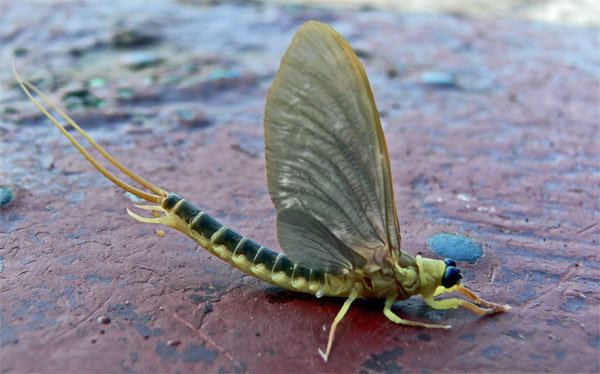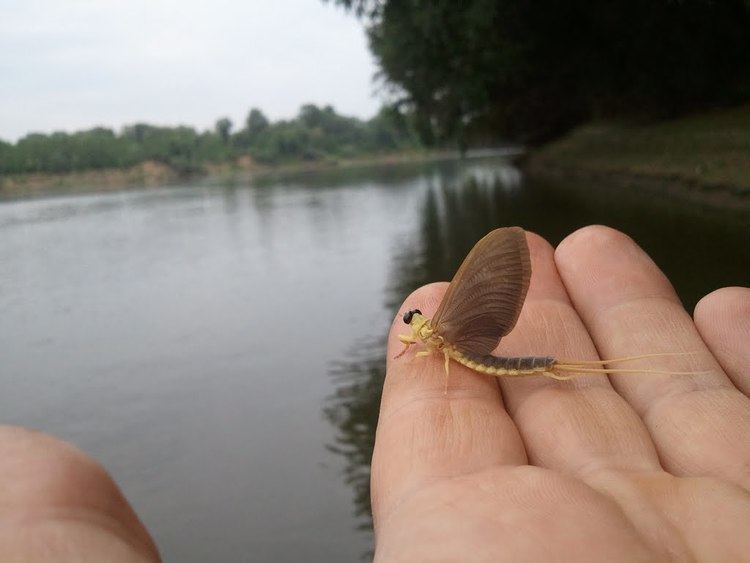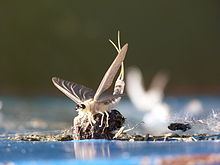Order Ephemeroptera Genus Palingenia Higher classification Palingenia | Scientific name Palingenia longicauda Rank Species | |
 | ||
Similar Mayfly, Insect, Palingeniidae, Ephoron virgo, Arthropod | ||
Tiski cvet palingenia longicauda
Palingenia longicauda is an aquatic insect in the order Ephemeroptera. It is known as the Tisa or Tisza mayfly after the European Tisza river where it is found and also as the long-tailed mayfly and giant mayfly since it is the largest mayfly species in Europe, measuring 12 cm (4.7 in) from head to tail.
Contents

Unlike many other species of mayflies, adult P. longicauda never move away from water; they fly low and their cerci are frequently touching or sweeping the surface. The slow-moving river and absence of surface-feeding fish help make this possible. The presence of P. longicauda is an indicator of clean unpolluted water. Now extinct in many European countries, it can be found in Serbia and Hungary on the Tisza river, as well as in Romania, on the Prut.

Mating

Large numbers of P. longicauda larvae will usually hatch and mature during a week in mid June; this natural phenomenon is known as the 'blooming of the Tisza' or 'Tisza blooming' and is a tourist attraction. Adults hatch two times in a short period of time. After hatching the adults only have a few hours to mate before they die. Consequently, groups of males will frantically try to mate with a female. Females will fly 1–3 km before laying their eggs on the river, which then sink to the bottom and hatch after about 45 days. The larvae develop in the mud for as long as three years before hatching. Larvae live in tunnels in the mud at a density of 400 tunnels per square metre.


